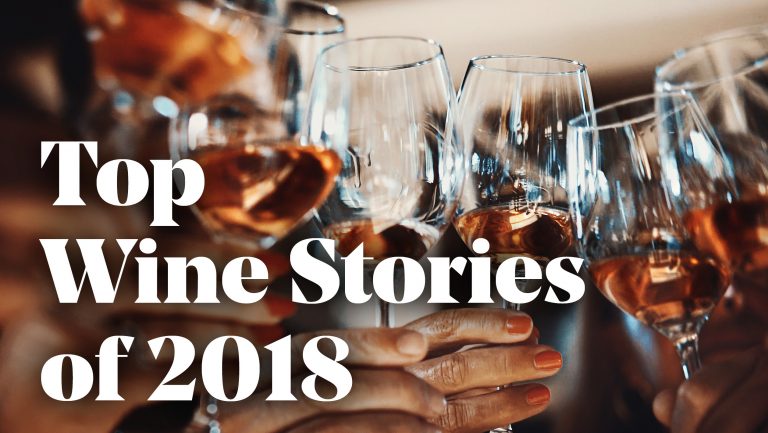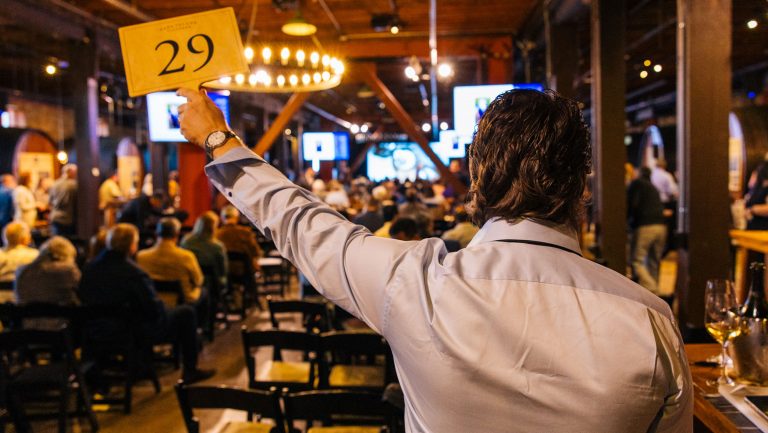Looking back at our top wine articles of the year, it became clear that our readers were most interested in learning about new innovations in viticulture and winemaking and boosting their knowledge overall. They zeroed in on the potential for non-vinifera hybrids, descriptors somms avoid, and must-have wine books. Personal stories also resonated, such as the essay by wine shop owner Stevie Stacionis about why it’s so hard to be a mom in the drinks business. Plus, there was the comic relief of the hit story about tasting room encounters that went horribly wrong. Our readers also showed a keen interest in scientific topics—from the use of flor in making savory, unfortified wines to what really happens to wine during decanting. In fact, our most popular wine article of all also fell into this camp, as you’ll see below.
10. Why Is It So Hard to Be a Mom in the Wine Business?
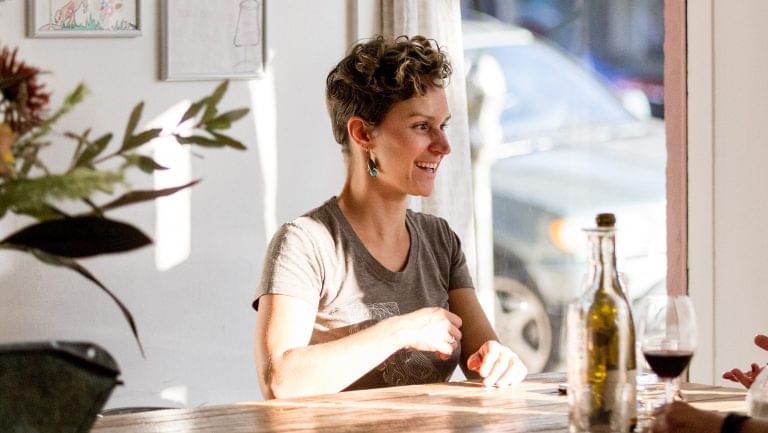
The cards are stacked against us, but we can work toward change
As the owner of Bay Grape, a wine shop and community gathering spot in Oakland, California, I’ve found that these “to myself” hours are often dedicated to everyone but myself: my staff, customers, vendors, insurance agents, accountants, and the people who are supposed to help me figure out why my POS is such a, well, POS. And now, as a mother, “me time” also means hours spent caring for my son. Our shop hours run late for guests, so admin hours run early—as does my son’s daily sleep schedule—resulting in a near-24-hour obligation to others. As I’ve found, this level of commitment is a recipe for burnout. At the same time, I’ve also become pretty well convinced that working in the wine industry is at least a smidgen rigged against women, particularly moms. [Read more]

Don’t miss the latest drinks industry news and insights. Sign up for our award-winning newsletters and get insider intel, resources, and trends delivered to your inbox every week.
9. Why Is DRC the World’s Most Coveted Wine?

Exploring the factors that make Domaine de la Romanée-Conti a one-of-a-kind phenomenon
Beyond tradition, stability, and vineyard sites, there’s the quality of the wines in the glass. The juice inside has been described as the Holy Grail of the wine world, sending consumers into a state of vinous rapture should a DRC cork be eased out of the bottle. There’s a saying that “all roads lead to Burgundy,” and if that’s the case, then all roads lead to DRC—for the few who can afford or find it. [Read more]
8. 7 Essential Books Every Wine Professional Should Own

From the classic to the new, these must-have books will sharpen your knowledge
The consummate wine professional possesses an ability not just to recite facts but to explain them. Here are the books I believe are essential in the pursuit of that endeavor. Some are classics, some near forgotten or barely known; all are thorough, but also thoroughly accessible. Some, like The Oxford Companion, though widely owned, are probably gathering dust as many would prefer to look something up on Wikipedia. All of these books deserve to be read and revisited often, as they transcend the everyday. They provide wine professionals with the knowledge and language necessary to create their own compelling narratives. [Read More]
7. A New Wave of Umami Wines Blooms Under Flor
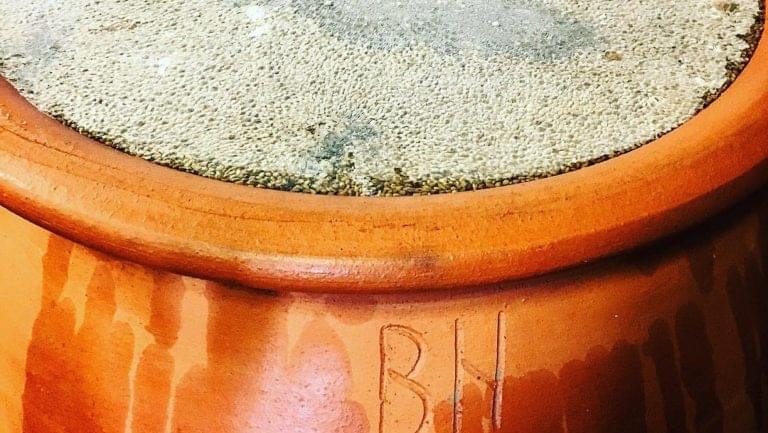
Photo courtesy of Brash Higgens.
New World winemakers are utilizing the yeast layer to create savory, unfortified wines that reference Old World regions
In 2017, Barnaby Tuttle, the winemaker at Oregon’s Teutonic Wine Company, received a completely botrytized load of Riesling from Crow Valley Vineyard in the Willamette Valley. The fruit clusters were so furry with mold, he recalls, that “they looked like tribbles, or guinea pigs.” Instead of turning the fruit away, Tuttle paid extra for it (to account for the lost water weight), and began thinking about how to put those fuzzy tribbles to use. [Read more]
6. The Science Behind Decanting Wine

Evaporation and oxidation are the main forces at play, but what’s really happening to the wine?
After being cooped up tightly inside a bottle, a wine often needs a breath of fresh air to express itself and show its full range of aromatics. Pouring wines into a decanter is a common way to get them to do just that. As the wine splashes and flows inside the decanter, air interacts with it. Some odors dissipate, others come to the forefront, and the wine is often found to become more expressive. At the same time, the mouthfeel may soften, as tannins appear to lose their hard edges. But what’s actually happening on a chemical level? [Read more]
5. The Science of Whole-Cluster Fermentation
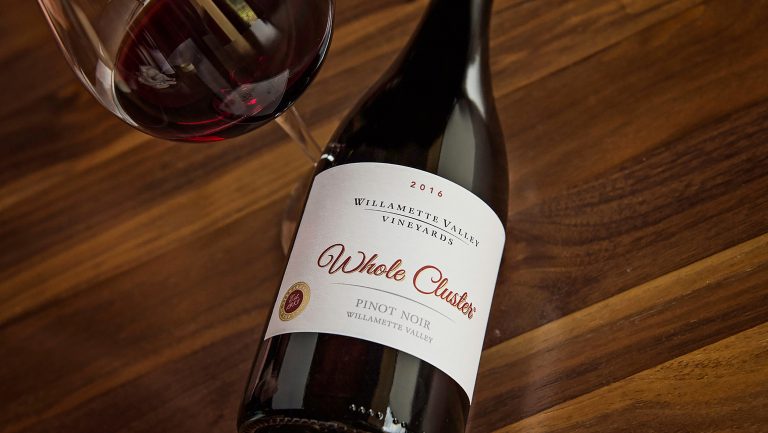
Added complexity is just one of the benefits of fermenting grapes on their stems
The rise of mechanical destemming over the course of the the 20th century means that nowadays the great majority of wines are made from fruit without stems. Traditionally, that wasn’t the case, and a number of producers—for a variety of reasons—still find advantages to fermentation with whole clusters of grapes on their stems. [Read more]
4. The Emergence of Non-Vinifera Wines
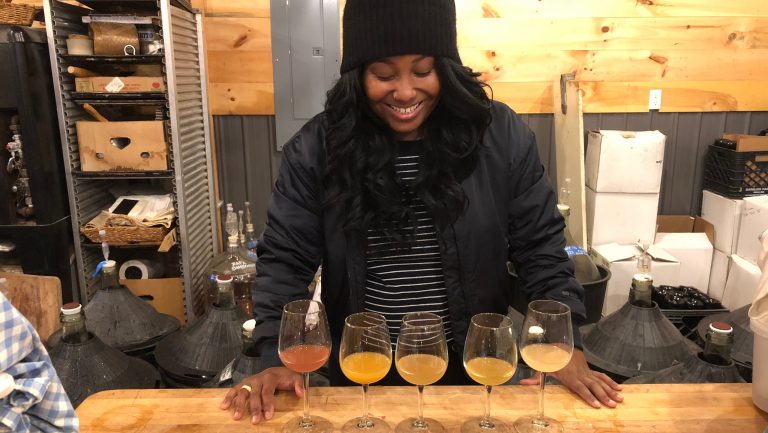
A pioneering group of American winemakers are demonstrating the potential of hybrids
Hybrid grapes don’t get much love. France bans them in classified wines, except for Baco Blanc in Armagnac distillation. Austria permits their use in the making and selling Uhudler wines in Südburgenland but affords them the lowest labeling standard—Wein (formerly Tafelwein). In the United States, despite all the cold winters these grapes hardily endure, they don’t always receive the warmest welcome among wine buyers.
Yet hybrids are undergoing a remarkable shift in the court of opinion of wine sippers and grapes growers. Deirdre Heekin and Caleb Barber, at La Garagista farm and winery in Barnard, Vermont, have led the charge since their inaugural wines, released in 2010. The winery now has 11 acres of vines and makes 13 wines, all of which are hybrids. [Read more]
3. Tasting Room Encounters Gone Horribly Wrong
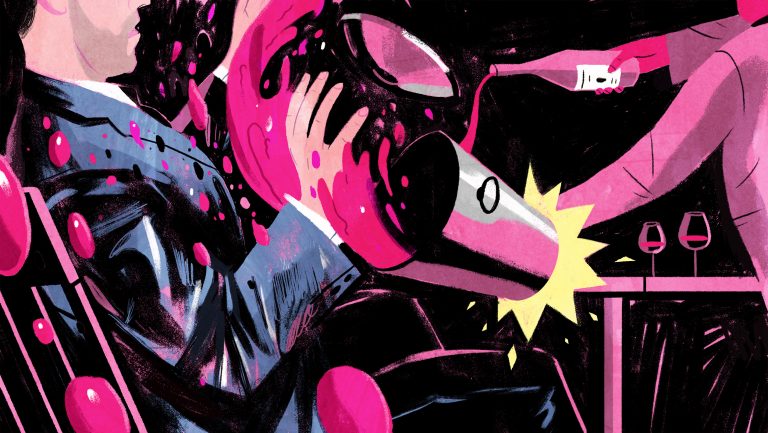
Industry professionals share the most awkward and obnoxious situations they’ve encountered at winery tasting rooms
Why, when they visit vineyards, do people feel the need to get naked? What compels a perfectly civilized oenophile to steal the whole cheese board? Who thinks it’s a good idea to climb a statue after a couple of glasses of wine? These are the sorts of questions that are asked by our bewildered colleagues who work behind the bars of winery tasting rooms. [Read more]
2. 5 Descriptors Wine Professionals Avoid
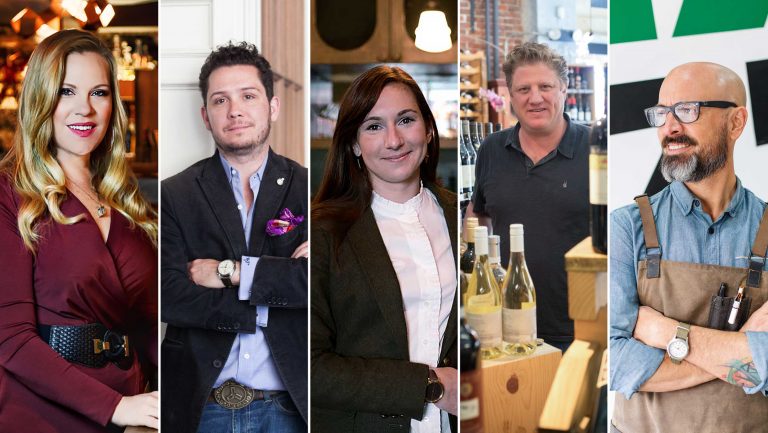
How sommeliers adapt the language of wine to better serve their customers
Whether working the floor of a restaurant or helping a customer in a wine shop, sommeliers are often called on to describe wine. It’s a task that can be fraught with peril. Sarah Tracey, the wine director at Rouge Tomate and Villanelle in New York City, says she learned this the hard way. “I had a table of 20-something girls,” she says, “and they were asking about a wine that had been aged sur lie. I used the word yeasty to describe it, and they looked horrified.” [Read more]
1. Why an Ancient Wine Technique is Making a Comeback
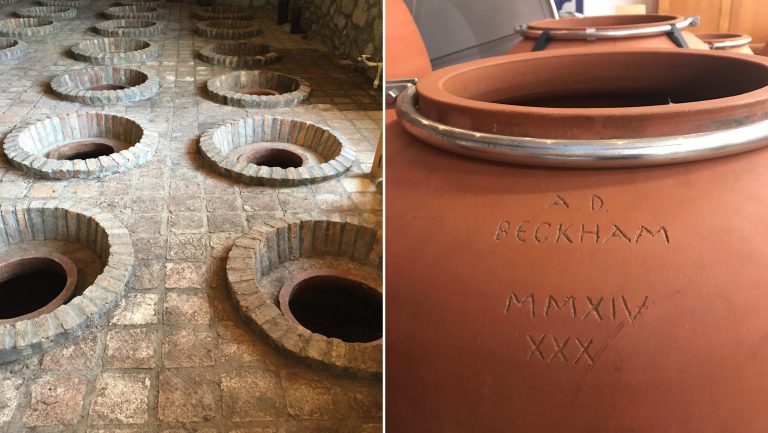
From Italy to Oregon, the use of clay pots in fermentation and aging is gaining devotees
Clay vessels have been used to ferment and age wine since ancient times. Neolithic Age wine vessels recently found in the Republic of Georgia were tested and confirmed to be the world’s oldest. “Almost every ancient culture, from the Canaanites to the Egyptians to the Assyrians to the Greeks and Romans, vinified in pottery vessels,” says Patrick McGovern, Ph.D., the scientific director of the Biomolecular Archaeology Laboratory at the University of Pennsylvania Museum in Philadelphia. His team conducted the liquid chromatography-mass spectrometry testing that confirmed the age of the Georgian vessels.
While these pots are an uncontested link to the past, they are also becoming a resource for the future of winemaking. Beyond the romanticism involved in borrowing ancient techniques, terra-cotta pots offer unique interactive properties with wine—they pull out acidity, allow oxygen exchange, and provide superior insulation, among other benefits—that are different from those of stainless steel, wood barrels, or concrete. These factors are are capturing the attention of winemakers around the world and encouraging new scholarship. [Read more]

Dispatch
Sign up for our award-winning newsletter
Don’t miss the latest drinks industry news and insights—delivered to your inbox every week.

